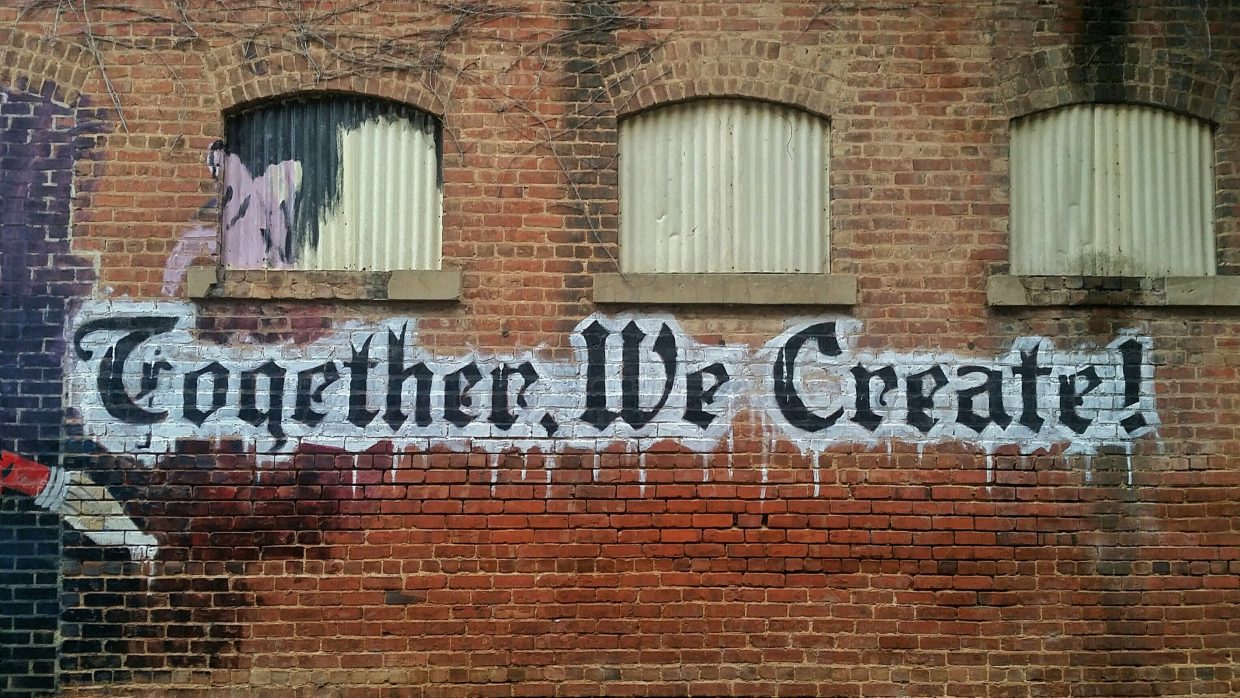There it was again. “This has shaped up well. Now we just need to get buy-in from the users.” Hearing these words at a recent meeting reminded me of how I’ve heard this sentiment several times in several settings. It can be (and has been, in my experience) expressed a few different ways, but it is usually an indication of a conversation headed towards the same general direction. One where said “users” have not been involved in the development of the goals or plans or visions at hand; a (largely) separate group is approaching the end of designing and suggesting solutions; and there is a need to check a box indicating those who will be impacted by our suggestions have been informed and have approved.
What is the impact and quality of such solutions? What is the level of agreement and approval that a community member can experience when they are brought into the decision-making process towards its end? What is the relationship between a group’s beliefs, definitions, and concepts of community development, and their experience of its processes and outcomes?
These are a few questions on which I have been critically reflecting, as part of my current journey studying community development. They have prompted me to re-examine links between Technology of Participation (ToP) methods and community development models, with a special focus on drawing from the literature around asset-based community development models. As the name suggests, these models focus on community-led action and view community members as active, capable, and resourceful citizens in decision-making and solution-ing processes. I will draw a few parallels here with ToP methods, knowing that there are several more to consider.
Bhattacharyya (2004) reminds us of why it is important to recognize the systemic roots of issues and accordingly apply collective strengths. They also advocate for community development that moves away from practitioners defining, owning, and solving problems towards affected people (previously viewed as passive or dependent) actively exercising their “agency” to do so. For those focused on results rather than processes, there are several documented cases of how asset-based approaches lead to creative and innovative responses to complex issues, as Missingham (2017) states. I see ToP methods, with their strong belief in the ability of people to co-create their own future in communities and organizations, and their clear focus on diagnosing systemic problems, as aligning with these views. Finally, Shaw and Crowther (2014) observe the importance of “consciousness-raising” (p. 394) when working with groups. This reminded me of the emphasis ToP methods place on clarifying alignments between our philosophies, values, images, and behaviours.
With ever-growing concerns about structures and systems that are not working for the health of our planet and the good of all humanity, I think it is a useful and important exercise to understand the underpinnings and impacts of the methods we use in our organizations and societies. This piece is one of my attempts at recognizing the community development-related dimensions underpinning ToP methods. I invite us all to continue reflecting on why we choose and favour certain tools in our work, and the impacts and ripple effects these choices create.
References:
Bhattacharyya, J. (2004, March). Theorizing Community Development. Community Development Society. Journal, 34(2), 5–34. https://doi.org/10.1080/15575330409490110
Missingham, B. D. (2017). Asset-based learning and the pedagogy of community development. Community Development, 48(3), 339–350. https://doi.org/10.1080/15575330.2017.1291528
Shaw, M., & Crowther, J. (2014). Adult education, community development and democracy: renegotiating the terms of engagement. Community Development Journal, 49(3), 390–406. https://doi.org/10.1093/cdj/bst057
Photo by “My Life Through A Lens” on Unsplash
About Ekta Bromley

Ekta Bromley is an educator and facilitator with over 10 years’ experience working in organizational learning and leadership development roles.
She specializes in project and process consulting, designing customized curricula for various organizational needs and settings, team development, strategic planning, action planning, change management, and conflict resolution. Her recent areas of focus have included workplace wellness, resilience and mindfulness, emotional intelligence, and cultural intelligence.







